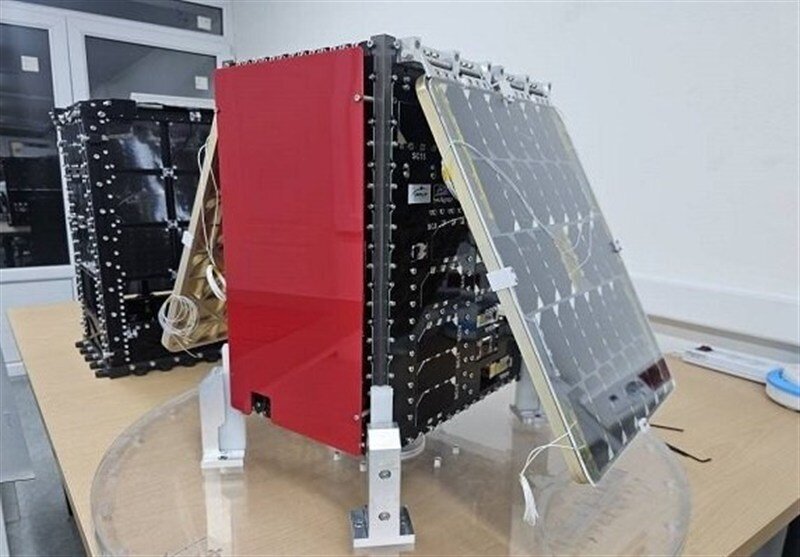Kowsar 1.5: Iran’s advanced dual-role satellite nears launch

TEHRAN – Iran is set to launch Kowsar 1.5, an upgraded version of its Kowsar 1 satellite, combining Earth imaging and Internet of Things (IoT) telecommunications capabilities in a single platform, according to the developer.
The launch, part of a national dual-mission program, is expected before the end of the Persian calendar year.
Kowsar 1.5 addresses technical limitations experienced by its predecessor, including restricted ground communication and limited observation windows, while building on lessons learned from earlier satellites Kowsar and Hodhod. These prior missions helped establish Iran’s private-sector capacity for satellite design and launch and paved the way for a new generation of multipurpose space assets.
“The new satellite will operate through two distinct optical perspectives: one for Earth imaging and the other for IoT communications,” said Dr. Hossein Shahrabi, CEO of Omid Faza, designer of the satellite. “This approach allows us to maximize operational efficiency while leveraging lessons from previous missions.”
Kowsar 1.5 is categorized as an In-Orbit Demonstration (IOD) mission. IODs are designed to showcase a satellite’s technical capabilities in orbit, similar to a minimum viable product (MVP) in terrestrial industries. Shahrabi emphasized that early-stage missions are expected to reveal technical challenges, which are then used to refine subsequent designs.
The project also introduces a novel economic model to support Iran’s private space sector. In collaboration with the Iranian Space Agency and the Vice-Presidency for Science and Technology, Omid Faza participates in a pre-purchase guarantee program, under which the agency commits to acquiring satellite data in advance. This arrangement provides financial stability for private companies and encourages investment in high-risk space technologies.
“This initiative creates a viable market for knowledge-based companies,” Shahrabi said. “Without government support, private investment in space would be economically unfeasible. At the same time, the missions carry high technical risk due to the innovative nature of the technologies involved.”
Kowsar 1.5 represents a significant step in Iran’s evolving space program, signaling both technological advancement and deeper private-sector involvement in satellite development. It is expected to serve as a bridge between earlier experimental satellites and the next generation of operational spacecraft, advancing Iran’s goal of independent, multipurpose space capabilities.
Leave a Comment